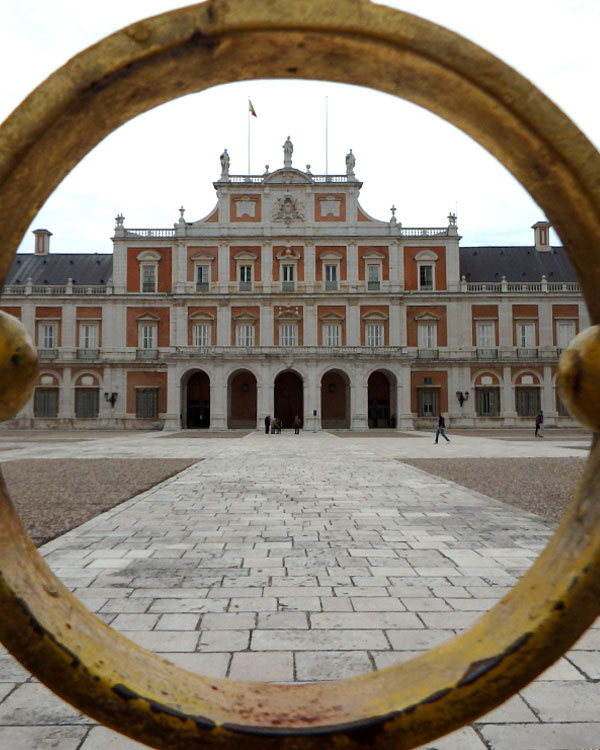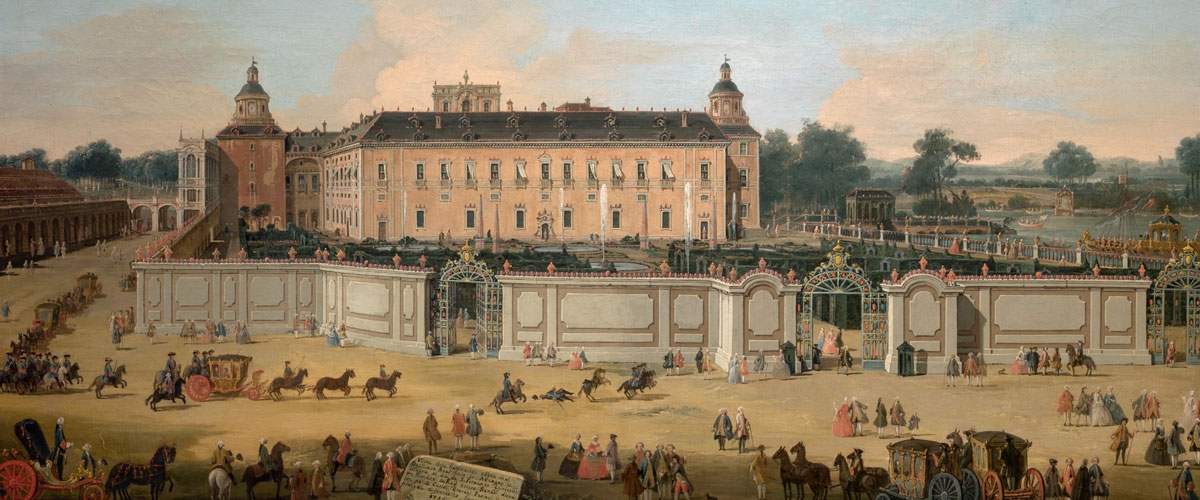
Discover Aranjuez
The Royal Precincts and Villa de Aranjuez, a city in the Community of Madrid with more than 50,000 inhabitants, have always been a privileged enclave due to its proximity to the Tagus and Jarama rivers. Its relationship with water has allowed it to be a coveted place since the dawn of history, and its relationship with the Spanish monarchy has endowed it with a unique combination of landscape, architectural and artistic works that helped it to be declared a "World Heritage Cultural Landscape” by UNESCO in 2001.
Historical profile
We place the origin of Aranjuez in the fourteenth century when the Order of Santiago began the construction of its Master House on the banks of the Tagus. This construction and the annexed territories passed into royal hands when Ferdinand the Catholic became Perpetual Master of the Order.
This first link to royalty led to the development of the
site, in which each monarch left his mark, ordering spaces and
carrying out new constructions. Philip II determined that this
place was a "Royal Precinct", creating spectacular tree-lined
avenues and well-kept gardens with numerous sculptures and
monumental fountains. The construction of the Palace began under
his reign; a commission assumed by the architect Juan Bautista
de Toledo, the same architect who began the El Escorial
Monastery.
In the 18th century, the arrival of the Bourbons to the throne,
with Philip V, brought a new splendor to Aranjuez. Ferdinand VI
initiated the reticulated division of the urban area, and his
successors Charles III, Charles IV and Isabella II, contributed
to giving the buildings and spaces their current appearance.
Over all these years, the condition of the Royal Precinct was
linked to an ordinance that prohibited the free settlement of
people in this town. This prohibition, which was endorsed at the
beginning of the 18th century, was gradually abandoned, in such
a way that the first City Council, in the manner common in the
rest of the Kingdom, was proclaimed by Napoleon in 1808. The
Constitution of 1812 revalidated this institution, but the
abolition of this Constitution by Ferdinand VII made it fall
back into disuse. It was not until 1836, with the Regency of
Maria Christina and a new constitutional government, that the
City Council of Aranjuez was definitively reinstated, assigned
to the province of Madrid since 1838.
Two historical milestones should be highlighted: the riot of
1808, which led to the fall of the prime minister, Manuel de
Godoy, and the inauguration in 1851 of the Madrid-Aranjuez
railway—our Strawberry Train.
